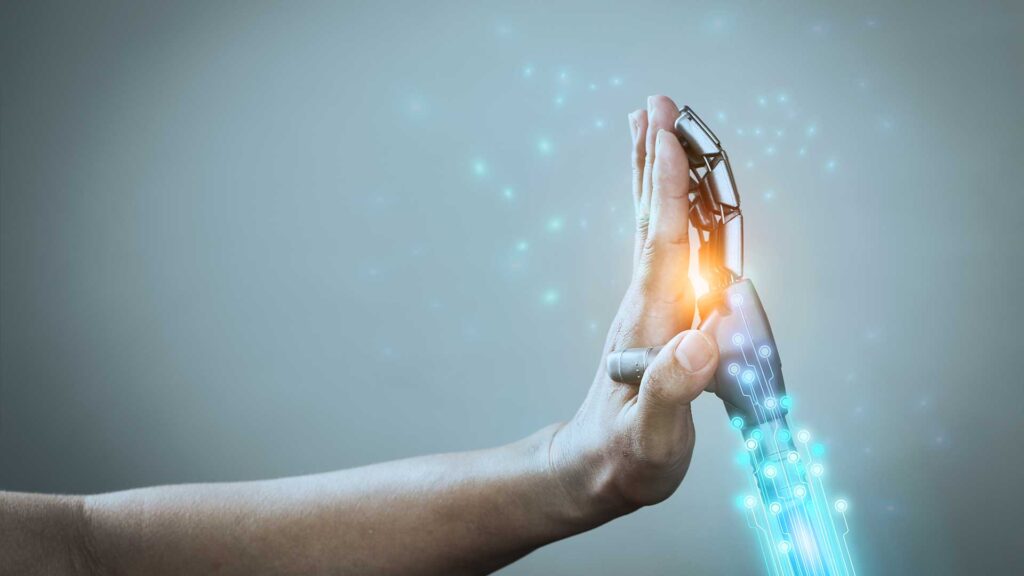Musculoskeletal health is transforming significantly, driven by relentless innovation and pioneering leadership. The landscape of physical therapy and rehabilitation is evolving; it is revolutionarily enhanced to foster better patient outcomes, integrate cutting-edge technology, and redefine healthcare possibilities. Here, we dive into five groundbreaking innovations shaping the future of musculoskeletal health.
Learn about innovations in musculoskeletal health
- Discover virtual physical therapy for remote care.
- Explore wearable technology for monitoring.
- Understand telemedicine, regenerative medicine, and robotics.
Virtual physical therapy
The advent of virtual physical therapy (VPT) marks a paradigm shift in how rehabilitation services are delivered. Gone are the days when physical boundaries and geographical limitations hindered access to quality care. VPT allows patients to receive personalized therapy sessions from the comfort of their homes, guided by professionals via digital platforms.
Personal Experience: I vividly remember the first time I utilized virtual therapy with a patient recovering from a knee replacement. The ease with which we could connect, perform exercises, and evaluate progress in real time was nothing short of revolutionary. It not only saved the patient\’s time and effort but also allowed for a more frequent and flexible therapy schedule.
This innovation is particularly vital in reaching underserved populations or those living in rural areas where specialist care is scarce. By minimizing travel and wait times, VPT enhances patient adherence to prescribed therapy regimes, ultimately leading to better health outcomes.
Insider Tip: Always ensure your internet connection is stable before starting a virtual session, and have a backup plan ready. This simple preparation enhances the session\’s effectiveness and prevents any interruptions.
Learn more about the future of virtual physical therapy here.
Wearable technology
Wearable technology in musculoskeletal health is not just about fitness trackers anymore. Today, advanced devices provide real-time feedback on body mechanics and movement efficiency, enabling both patients and therapists to make immediate adjustments.
These devices range from sensor-embedded wearables that monitor joint movement to smart garments that track muscle activity and load. The data collected is invaluable, providing insights that lead to more tailored and effective treatment plans.
Personal Experience: Integrating wearable technology into the rehabilitation programs at Merlin Physical Therapy has significantly enhanced our approach to treatment. For instance, a sensor-equipped knee brace helped one of our patients monitor their walking pattern post-surgery, drastically improving their recovery time by promoting correct posture and movement.
The potential for wearable technology to prevent injuries by identifying poor mechanics before they become problematic is immense. This proactive approach to musculoskeletal health not only improves individual outcomes but could also reduce healthcare costs associated with long-term injuries.
Insider Tip: For best results, combine the data from wearable technologies with traditional assessment techniques to get a comprehensive view of a patients progress.
Explore innovative wearable technologies in rehabilitation here.
Telemedicine
Telemedicine has reshaped numerous facets of healthcare, and musculoskeletal treatment is no exception. This method extends beyond virtual therapy by encompassing consultations, follow-up visits, and patient education, all facilitated through digital communication platforms.
The efficiency of telemedicine in managing chronic musculoskeletal conditions, such as arthritis and back pain, is particularly noteworthy. Patients can discuss symptoms, receive expert advice, and adjust their treatment plans without the need for frequent in-person visits.
Personal Experience: A patient with chronic back pain could reduce their in-office visits to just once a month, relying on telemedicine for weekly check-ins. This not only maintained the effectiveness of their treatment plan but also significantly enhanced their comfort and satisfaction with the care process.
Telemedicine also plays a crucial role in post-operative care, where immediate and accessible communication can determine the success of recovery. It provides a platform for patients to voice concerns and receive professional guidance, ensuring they remain on the correct path to recovery.
Insider Tip: Always keep your telemedicine appointments concise and focused. Prepare a list of issues and questions beforehand to make the most of your session.
Read more about telemedicine in musculoskeletal health here.
Regenerative medicine
Regenerative medicine is revolutionizing the approach to musculoskeletal injuries and conditions by harnessing the body’s own repair mechanisms. Techniques such as stem cell therapy, platelet-rich plasma (PRP) injections, and tissue engineering are not just treatments; they are transforming the foundation of recovery processes.
These methods have shown promising results in accelerating healing, reducing pain, and improving function in conditions ranging from degenerative disc disease to tendon injuries. The potential to regenerate damaged tissues rather than just treat symptoms is a monumental shift in musculoskeletal care.
Personal Experience: Observing the recovery of a patient who received PRP injections for an Achilles tendon injury was a turning point in my appreciation for regenerative medicine. The speed and extent of healing were significantly better than traditional methods.
As research continues and these therapies become more refined and accessible, the implications for patient care and cost-efficiency in healthcare are profound.
Discover more about regenerative medicine here.
Robotics and artificial intelligence
Robotics and artificial intelligence (AI) in musculoskeletal health care are futuristic concepts and current realities transforming rehabilitation. Robotic devices provide consistent and precise physical therapy, especially useful in the early stages of rehabilitation when movement needs to be controlled and measured accurately.
Conversely, AI offers predictive analytics that can forecast patient outcomes, personalize treatment plans, and even identify risk factors for musculoskeletal disorders before they manifest. This proactive approach not only enhances patient care but also streamlines healthcare providers’ workflow by more accurately predicting needs and outcomes.
Personal Experience: Implementing an AI-driven therapy protocol for post-stroke rehabilitation provided insights into patient progress that were previously impossible to gauge with such precision. This tailored approach improved patients’ motor functions at a noticeably faster rate.
The integration of AI and robotics in physical therapy not only ensures high precision in treatments but also frees up human resources to focus on the more nuanced aspects of patient care.
Insider Tip: Stay updated with the latest software updates and training for any robotic or AI systems you use to ensure you are utilizing these technologies to their full potential.
Learn more about the role of AI in musculoskeletal health here.
Learn more about musculoskeletal health
Innovations in musculoskeletal health care are reshaping how we understand, treat, and manage musculoskeletal disorders. Each of these technologies not only offers new ways to enhance patient care but also opens up exciting possibilities for future developments in the field.
At Merlin Health, we are committed to staying at the forefront of these innovations and continually integrating the latest advancements into our practice. Visit our main website to learn more about how these innovations can benefit you or to book a consultation.
By embracing these innovations, we improve the quality of care provided and contribute to the broader goal of transforming healthcare for better patient outcomes and a healthier tomorrow.
Q & A
Q: Who is driving innovation in musculoskeletal health?
A: Researchers, medical professionals, and technology companies are driving innovation in musculoskeletal health.
Q: What are some examples of innovation in musculoskeletal health?
A: Examples include real-time AI-assisted on-device exercise prescription programmes such as Merlin Health for monitoring movement and telemedicine integration for remote consultations.
Q: How can innovation benefit musculoskeletal health patients?
A: Innovation can lead to faster diagnosis, personalized treatment plans, minimally invasive procedures, and improved recovery outcomes.
Q: What challenges may hinder innovation in musculoskeletal health?
A: Challenges may include regulatory hurdles, funding limitations, resistance to change, and ensuring patient data privacy and security.
Q: How can patients advocate for innovative solutions in musculoskeletal health?
A: Patients can advocate by staying informed about new technologies, sharing their experiences with healthcare providers, and participating in clinical trials or research studies.
Q: What if I prefer traditional treatment methods over innovative approaches?
A: It’s important to discuss your preferences with your healthcare provider. They can help you find a treatment plan that aligns with your needs and comfort level.






